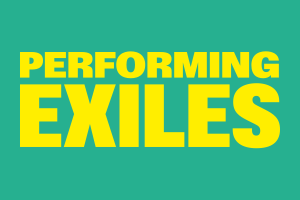
Opera
The Rape of Lucretia
Opera in two acts by Benjamin Britten (1913-1976)
Libretto by Roland Duncan
based on the play “Le Viol de Lucrèce” by André Obey
World premiere on 12 July 1946 in Mr and Mrs John Christie’s Opera House, Glyndebourne

The Rape of Lucretia © Sascha Weidner
When it came to composing his second opera, a year after the first-night success of his “Peter Grimes”, Benjamin Britten opted for a radical change of “format”. Rejecting the cumbersome route involving chorus, full orchestra and multiple soloists – for which, in the immediate post-war years, the funding and audiences were lacking -, he launched into the composition of a chamber opera. Costs were to be kept to a minimum and the work was to be so flexible in its logistics that it could be performed on small stages and toured to the provinces. With his colleagues from the “Peter Grimes” period, Eric Crozier, singer and theatre manager Joan Cross (his first Ellen Orford) and his partner, the tenor Peter Pears, Britten founded the Glyndebourne English Opera Group, which was later to spawn the English Opera Group and the Aldeburgh Festival. The first project of this new creative troupe was “The Rape of Lucretia”.
Britten considered the ancient tale of the Roman Lucretia, a faithful and loving wife who is raped by the unscrupulous Tarquinius and commits suicide as a result, to be an apt subject for traumatised post-war audiences. Using an orchestra of only 13 musicians and eight soloists, he came up with a work of thrilling intensity that is also one of his most lyrically beautiful pieces. Informed by the traditions of baroque opera, with its clear demarcation of arioso and recitativo sections, the work is overtly and deliberately reminiscent of Purcell, the most important English writer of operas before Britten. The chorus, accompanying and commenting on the action, is a reference to an ancient format, albeit here only in the form of one man [“Male Chorus”] and one woman [“Female Chorus”]. Britten created the title role for the celebrated alto Kathleen Ferrier, with Peter Pears taking the part of the “Male Chorus” and Joan Cross singing the “Female Chorus”.
Conductor Nicholas Carter
Directed by Fiona Shaw
Stage design Michael Levine
Costume design Nicky Gillibrand
Lighting design Paul Anderson
Male Chorus Thomas Blondelle
Female Chorus Ingela Brimberg
Collatinus Andrew Harris
Junius Seth Carico
Tarquinius Duncan Rock
Lucretia Katarina Bradic
Bianca Ronnita Miller
Lucia Elena Tsallagova
Orchester der Deutschen Oper Berlin






